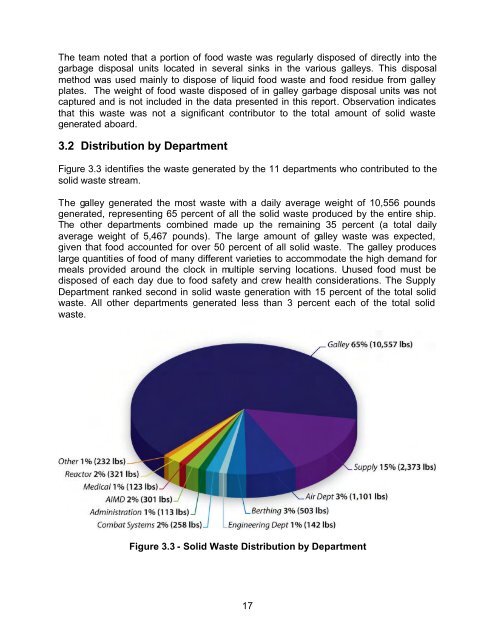You also want an ePaper? Increase the reach of your titles
YUMPU automatically turns print PDFs into web optimized ePapers that Google loves.
The team noted that a portion of food waste was regularly disposed of directly into thegarbage disposal units located in several sinks in the various galleys. This disposalmethod was used mainly to dispose of liquid food waste and food residue from galleyplates. The weight of food waste disposed of in galley garbage disposal units was notcaptured and is not included in the data presented in this report. Observation indicatesthat this waste was not a significant contributor to the total amount of solid wastegenerated aboard.3.2 Distribution by DepartmentFigure 3.3 identifies the waste generated by the 11 departments who contributed to thesolid waste stream.The galley generated the most waste with a daily average weight of 10,556 poundsgenerated, representing 65 percent of all the solid waste produced by the entire ship.The other departments combined made up the remaining 35 percent (a total dailyaverage weight of 5,467 pounds). The large amount of galley waste was expected,given that food accounted for over 50 percent of all solid waste. The galley produceslarge quantities of food of many different varieties to accommodate the high demand formeals provided around the clock in multiple serving locations. Unused food must bedisposed of each day due to food safety and crew health considerations. The SupplyDepartment ranked second in solid waste generation with 15 percent of the total solidwaste. All other departments generated less than 3 percent each of the total solidwaste.Figure 3.3 - <strong>Solid</strong> <strong>Waste</strong> Distribution by Department17


